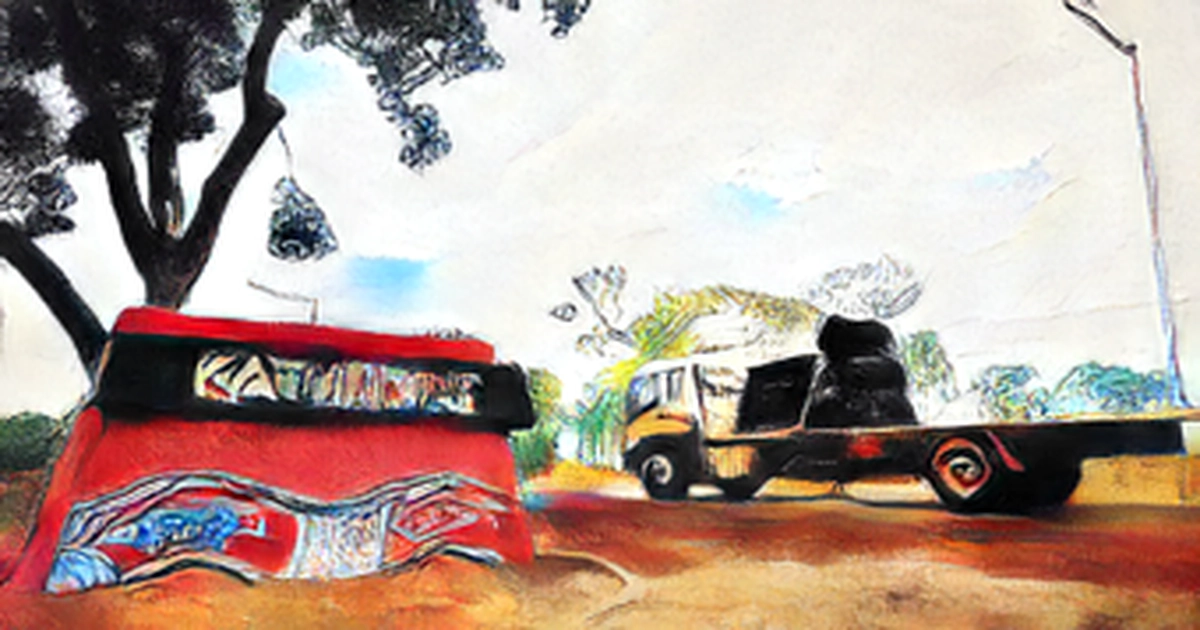
One of the coldest July days in recorded history looks like it is about to be set in the Northern Territory in the middle of the dry season.
The Bureau of Meteorology is describing an unusual combination of cloud band and south-easterly winds that are causing cold temperatures across the Territory, as the top end's typically hot and sunny middle months have been disrupted by dark clouds and rain over the past couple of days.
The reading on Friday from a Katherine weather station at Tindal RAAF Base could be the second coldest July day on record, with the BOM forecasting a high of 19 degrees.
Temperatures below 20 degrees have never been recorded at a station other than a chilly 17 degree day in 1986.
2 mm of rain was recorded overnight in the Katherine region, and 18 mm were recorded in Tennant Creek.
On Monday, the BOM issued a cold weather warning to farmers and producers in the Katherine, Tennant Creek, Mount Isa and Longreach area.
It said that temperatures are expected to be 8 to 14 c below average for this time of year and could see 15 - 30 mm of unseasonal rainfall over a few days with isolated heavier falls.
The rapid change in temperature could cause stress to livestock, according to producers. Billy Lynch, a senior meteorologist at the BOM, says that an upper-level trough hovering over northern Western Australia is tapping into tropical moisture across Indonesia and the Timor Sea, and is spreading across the Northern Territory in the form of a cloud band.
This time of year, cloud bands through Central Australia are pretty common, according to Lynch.
The cloud band is expected to start weakening and move eastwards into Queensland on Saturday, but not before bringing a unexpected bout of rain.
South of Katherine, through the Carpentaria and the northern Barkly district, the BOM forecasts 15 to 30 millimetres of rain this week.
It's a good news for residents in the region after significant rainfall deficiencies.
At this time of year, it's not unusual to get rainfall for Katherine.
On any given June month, it averages six of a millimetre and two millimetres in July, but this week the forecast is as much as 30 millimetres.
It would be unusual to have that kind of rainfall at this time of year, Lynch said.
Thursday could be a wet day in Darwin, with as much as 10 to 20 millimetres predicted, depending on how the cloud band develops.
Veterinarian Campbell Costello said the short, cold snap could go as far as stressing cows so much that birth rates could be reduced.
There is a tipping point where the environmental stresses are cold in this case. He said the cow starts having to dig into her energy reserves more and they can lose weight or become immunocompromised.
Mr Costello said cattle may require more food intake in cold weather to keep warm and keep the furnaces stoked with added stresses like mustering or trucking.
The unseasonal weather could have an impact on pasture quality and quantity for cattle producers, according to Dr Robyn Cowley, a senior rangelands scientist with the NT Department of Industry.
If you have perennial Mitchell grasses, they won't be negatively affected by this rainfall event, but you wouldn't really expect much pasture growth because they respond to warm season rain, she said.
If you have annual pastures like Flinders grass, you might lose the bulk of your pasture that can spoil with this out of season rainfall and become unpalatable and unavailable to livestock.
